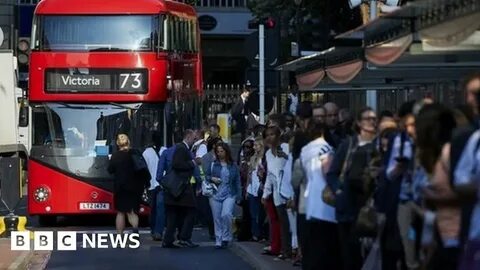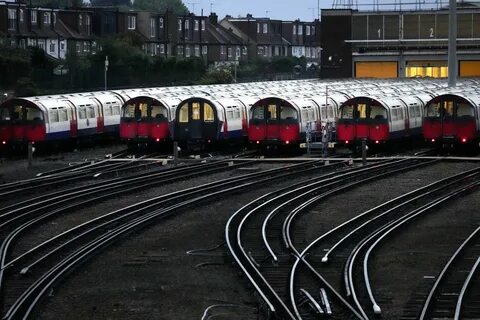Transport for London (TFL) strikes have grow to be a familiar prevalence, mainly for Londoners who rely upon public transportation. These moves, frequently fueled via disputes over pay, running conditions, or investment problems, disrupt the day by day lives of hundreds and produce attention to the challenges within London’s transportation gadget. In this newsletter, we’ll explore what TFL strikes are, why they occur, and how they affect the city, in conjunction with a few guidelines that will help you navigate the disruptions.
What Are TFL Strikes?
TFL moves are prepared walkouts by means of Transport for London personnel, normally spearheaded via unions representing the staff. When negotiations among TFL and its workers attain a impasse, strikes may be called to call for better operating situations, fair pay, or modifications to policies impacting employees’ properly-being. During those moves, services like the underground, buses, and different sorts of public transit are frequently disrupted, causing delays for commuters throughout the metropolis.
History and Background
The history of TFL moves dates returned to whilst public transportation have become a principal part of London’s infrastructure. Over the years, these strikes have always highlighted the anxiety among providing efficient public offerings and ensuring honest treatment of employees. With London’s reliance on public shipping, TFL moves regularly emerge as a focal point for each public debate and media coverage.
Causes of TFL Strikes
TFL moves aren’t random; they’re rooted in complex issues that effect people’ every day lives and properly-being. Let’s take a more in-depth look at the primary elements behind those moves.
Union Demands
Trade unions play a essential position in starting up TFL strikes. They constitute personnel who face problems like stagnant pay, protection issues, and task insecurity. Union demands frequently encompass honest pay modifications to match inflation, stepped forward running conditions, and better activity protection. These demands reflect the unions’ assignment to shield and help the group of workers, making sure that people acquire what they believe is truthful.
Staff Shortages and Funding Issues
In current years, TFL has grappled with monetary constraints, specially following reduced ridership all through the pandemic. Budget cuts and workforce shortages have extended workloads, regularly leading to burnout and dissatisfaction amongst personnel. When the personnel is stretched too skinny, unions step in, arguing that the conditions no longer only hurt employees but also reduce service pleasant for commuters.
Impact of TFL Strikes
The outcomes of TFL moves expand beyond the instantaneous staff, creating a ripple impact that impacts Londoners’ every day lives, nearby groups, and the city’s economic system.
Commuters and Daily Life
Commuters are directly laid low with TFL strikes, often dealing with delays, overcrowded trains, and the need to locate opportunity travel alternatives. During rush hours, these problems accentuate as lots of people rely upon public transit to attain their places of work, faculties, and other destinations. For many, the moves create unavoidable delays that disrupt carefully deliberate schedules.

Local Businesses and Economy
The impact of TFL moves on agencies, especially those dependent on daily commuter site visitors, can be tremendous. Local stores, eating places, and service providers revel in a drop in foot traffic all through moves, potentially main to reduced sales and operational disruptions. For small organizations, those moves can present an surprising assignment to maintaining ordinary business operations.
Major TFL Strike Events
Several TFL moves stand out due to their scale, impact, and the public reaction they garnered. Examining these events enables illustrate the continuing troubles between TFL employees and control.
Key Dates and Incidents
Over the years, a few strikes have emerge as memorable due to their intensity and timing. For example, moves happening in the course of peak holiday seasons or foremost occasions often gain wider media coverage, drawing interest to the continual troubles and highlighting the want for lengthy-term solutions.
Government Responses
The authorities’s approach to TFL strikes varies, with efforts ranging from negotiations with union leaders to investment regulations geared toward addressing underlying issues. Balancing employee demands with public wishes remains a hard undertaking for policymakers. Government responses frequently involve tries to reach compromises which could reduce future disruptions.
How TFL Strikes Affect Transportation
Transportation offerings throughout London face disruptions during TFL strikes, impacting the ordinary routines of many. Let’s discover how these strikes have an effect on exceptional modes of transit.
Bus and Train Services
Buses and trains are the spine of TFL’s services. When moves arise, those offerings both function at a discounted capacity or end entirely, inflicting delays, overcrowded buses, and lengthy wait times. Commuters may additionally need to take alternative routes, endure longer journey instances, or maybe omit out on every day exercises because of limited transportation alternatives.
Cycling and Walking Alternatives
In reaction to the moves, many Londoners decide to stroll or cycle to their locations. While these options offer temporary solutions for some, they’re no longer viable for each person, particularly people with longer commutes. However, biking has visible a surge for the duration of TFL strikes, as human beings are trying to find independent and reliable methods to get round.
Public Opinion on TFL Strikes
TFL moves regularly provoke blended reactions. While some human beings aid the employees’ demands for fair treatment, others sense that the disruptions are an inconvenience. Here’s a examine how the general public perspectives those strikes.
Support vs. Opposition
Public guide for TFL people is not unusual among folks that sympathize with the challenges personnel face. However, opposition arises from those annoyed with the aid of the disruptions, especially commuters and commercial enterprise proprietors tormented by lost income or missed appointments. This department highlights the complicated nature of TFL strikes and the challenge of pleasant both the body of workers and the general public.
Social Media and Community Voices
Social media systems serve as shops for public dialogue, with many human beings sharing studies, expressing frustrations, or organizing opportunity shipping answers. Some groups even use social media to create carpooling corporations or proportion updates at the strike’s development, fostering a sense of solidarity amongst affected commuters.
How to Cope with TFL Strikes
Adapting to TFL moves can be tough, but there are techniques that will help you navigate these disruptions.
Alternative Routes and Modes
Exploring opportunity routes or modes of delivery can make commuting throughout a strike extra viable. Consider using buses from one-of-a-kind operators, carpooling, or even biking if possible. Being flexible together with your transportation options can reduce pressure and assist you attain your vacation spot on time.
Planning Ahead for Commuters
When TFL declares strike dates earlier, making plans ahead could make a large distinction. Whether it’s adjusting your work hours, working from home, or arranging alternative journey options, being organized for a strike day can keep time and frustration.
Future of TFL Strikes
The destiny of TFL strikes is unsure, with both demanding situations and potential answers at the horizon. Understanding the possibilities can assist us assume what’s next for London’s transportation device.

Read More: BBC Weather Edinburgh: Everything You Need to Know!
Potential Resolutions
Solutions to lessen the frequency of TFL moves may additionally encompass securing extra funding, enhancing employee advantages, and enforcing protection measures. If successful, those modifications could ease tensions among TFL personnel and control, resulting in fewer disruptions for commuters.
Future Challenges
Despite ability solutions, TFL can also hold to stand demanding situations because of budget constraints, political shifts, and ongoing demands from the personnel. Strikes may want to remain a opportunity so long as these underlying problems persist, making it important for each TFL and policymakers to work closer to sustainable answers.
Conclusion: Wrapping Up on TFL Strikes
TFL strikes reveal the sensitive balance between employees’ rights and public comfort. While these moves are disruptive, they create to mild the vital position TFL personnel play in maintaining London shifting. By know-how the causes, consequences, and destiny of TFL strikes, commuters can better prepare for these demanding situations. Navigating TFL strikes may not be smooth, but with a bit of coaching, Londoners can adapt and find methods to preserve shifting ahead.
FAQs
What normally reasons a TFL strike?
TFL moves are generally driven through disputes over pay, operating conditions, and protection troubles that personnel face.
How frequently do TFL strikes show up?
The frequency varies, but moves can occur several times a 12 months, relying on unresolved troubles.
What can commuters do at some stage in a TFL strike?
During a TFL strike, commuters can discover alternatives like cycling, carpooling, or the usage of non-TFL offerings.
Are all TFL services affected during moves?
No, moves typically effect precise services like the underground, though disruptions might also affect other networks not directly.
How does the government manage TFL strikes?
Government responses include negotiating with unions, presenting extra funding, and operating to deal with worker grievances.


